Features
On a February night in 1964, a veteran TV host and four young musicians from England changed music, broadcasting, popular culture… they changed everything.
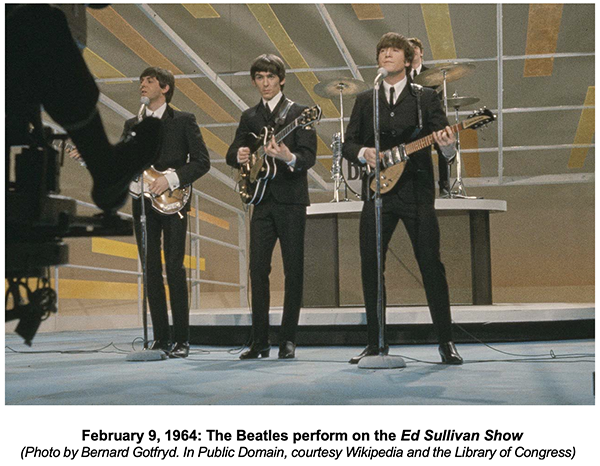
By Mark Wainwright
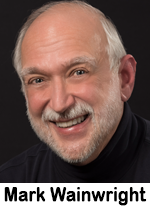 In early December 1963, America was a very gloomy place. The assassination of President John F. Kennedy on November 22 brought the country to a virtual standstill for four days, and the emotional and psychological hangover lingered for weeks. The nation needed a dose of uplifting energy and fun, and the Beatles were the ideal remedy.
In early December 1963, America was a very gloomy place. The assassination of President John F. Kennedy on November 22 brought the country to a virtual standstill for four days, and the emotional and psychological hangover lingered for weeks. The nation needed a dose of uplifting energy and fun, and the Beatles were the ideal remedy.
The Beatles were hardly newcomers. They had already been a successful act in the UK and mainland Europe (especially in Germany) for several years; oddly, they never got much traction in the United States. They had released a handful of songs in the US on smaller, independent record labels as far back as 1962, but they received little attention.
“She Loves You,” one of their early signature songs, was a failure when it was first released here in 1963. Dick Clark tried to feature it on “American Bandstand,” but the young dancers on his show didn’t know what to make of it and rated it poorly. But as the year went on, their popularity in England dramatically turned into a phenomenon that featured wildly enthusiastic crowds of screaming teenage girls. No one seems to be able to pinpoint what the catalyst was, but their already established popularity quickly grew into what became known as “Beatlemania.”
The Beatles first appeared on American TV on network news broadcasts. NBC’s “Huntley-Brinkley Report” aired a segment about the Beatles and Beatlemania in England on November 18,1963. Edwin Newman was the correspondent, and he and his colleagues were rather dismissive of the group, their music, and their young fans. Meanwhile, over at CBS, Walter Cronkite’s take was more generous. Their reporter in London, Alexander Kendrick, was pretty condescending as well, but Cronkite liked the segment when he saw it on the “CBS Morning News” on November 22 and planned to run it on his evening newscast. Sadly, what happened in Dallas hours later preempted everything.
A few weeks later, Cronkite thought his viewers could use a lift from the gloom that had descended upon the country, and he thought that segment would be a nice diversion. He ran it on his newscast on December 10, and that story really got the nation’s attention.
Young America was soon clamoring for everything Beatles. Radio stations dug up the records that hadn’t been successful and started playing them constantly. Beatles paraphernalia was heavily marketed and sold well. Capitol Records released “I Want to Hold Your Hand” in the United States on December 26 — the boys finally had a deal with a major record company in the US — and by New Year’s Eve, it was already a hit. It was the first of six Beatles’ songs that reached #1 on the Billboard “Hot 100” chart in 1964.
Meanwhile, Ed Sullivan was the host/master of ceremonies of a long-running CBS variety show that dominated the Sunday night ratings for years. Unlike most of his contemporaries, he was happy to present many of the early stars of rock-and-roll; Elvis Presley, Buddy Holly, and Jackie Wilson were among the pioneering artists of the new music genre who got their first major television exposure on Sullivan’s program.
Sullivan heard about the Beatles, saw them receive a tumultuous reception at Heathrow Airport in London, saw the CBS news segment, and was determined to present them on his show. Whatever he thought of their music, he respected talent and knew a hot act when he saw one.
A deal was quickly arranged between Sullivan and Brian Epstein, the Beatles’ long-time manager. Sullivan would bring them to the United States for three consecutive Sunday night shows. The February 16 performance would be broadcast live from the Deauville Hotel in Miami Beach, the third appearance on February 23 would be taped in advance. But the first of the three, a live performance on the Ed Sullivan Show February 9, was the one most anticipated. The two New York shows would be presented at the studio venue now known as the “Ed Sullivan Theater.”
When word got out, the demand for tickets was insane. CBS received more than 50,000 ticket requests (the tickets were free) for a studio theater that held 728. Getting one of the tickets was largely a matter of luck. Numerous notables and VIPs called upon favors owed and contacts at CBS to get tickets for their daughters (or granddaughters). Only a few succeeded.
When the Beatles arrived in New York on a Pan Am 707, they were greeted by a near-hysterical crowd of teenage girls (this had become a routine occurrence). They needed a police escort to get into Manhattan, and they needed a phalanx of New York cops to get them in and out of their hotel. All of this, of course, was breathlessly reported in the news media.
They arrived at the theater on Saturday, February 8, for a lighting and sound check and a brief rehearsal. George Harrison was recovering from a throat infection and was still tired and feverish, so he stayed at the hotel to rest, while a member of their entourage and a CBS production assistant took turns as stand-ins for George.
The following evening, at 8:00 pm Eastern Time, the “Ed Sullivan Show” went on the air, and shortly after the opening credits, Sullivan came on stage and offered a few brief remarks about the Beatles and their spectacular overnight success (“overnight” at least as far as Americans were concerned). Then… “Ladies and Gentlemen… THE BEATLES!” The theater erupted.
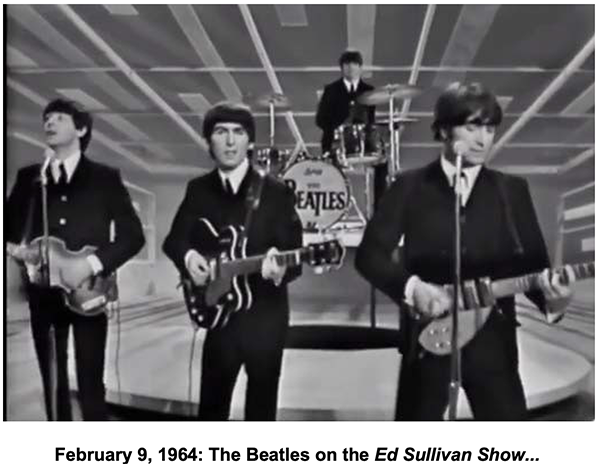
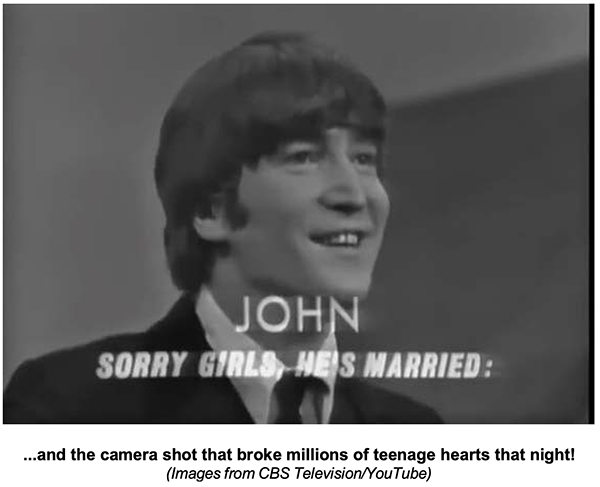
This moment led to one of the enduring music/broadcasting history trivia questions: What was the first song the Beatles performed live on their first “Ed Sullivan Show” appearance? No, it wasn’t “She Loves You” or “I Want to Hold Your Hand” (although they did those later in the show). Hint: while it was one of their most popular early songs, it was never officially released as a single. Okay, it was “All My Loving,” track #6 on side one of their iconic Meet the Beatles! album.
The ratings for the show were unprecedented. More than 73 million viewers – 39% of the country’s population – saw the performance. The broadcast drew a 60 share, which meant that 60% of American TV households were tuned in. Ed Sullivan always had pretty good ratings, but this was more than triple the size of his usual audience.
The Beatles were far from finishing their first American visit. Brian Epstein had managed to squeeze a couple of concert appearances into their tight schedule. One of those took place in Washington, DC two nights later, at the old Washington Coliseum. The old barn had seen some big events in its history, but nothing like this. The folks who owned and managed the building had barely heard of the group, but a concert promoter in the region convinced them to book a show. There was minimal promotion and advertising, but it wasn’t necessary. The tickets sold out in only a few hours.
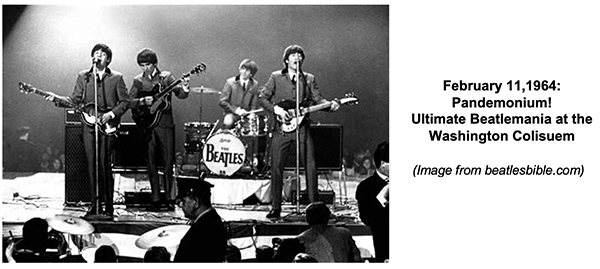
It turned out to be one of the most intense and intimidating concert environments ever seen, and is still regarded as such. The Beatles performed one of their few (maybe their only?) concerts “in the round,” on a small stage at the center of the arena, placed where the boxing ring would normally be situated. The building was packed with 8,092 ticket holders, most of them (as usual) screaming teenagers, with the front rows only a few feet from the stage. Imagine the frenzy in Ed Sullivan’s studio theater, now multiplied by a factor of ten. Fortunately, nothing really serious occurred, and the band handled the situation flawlessly, even making adjustments on the fly to handle audio and microphone issues…although it’s hard to believe they could even hear themselves amidst the screaming. They returned to New York to perform at Carnegie Hall the following day, then flew to Florida to spend a few days before returning to England. They returned for a North American concert tour in late summer. That tour was much better organized and promoted, although Beatlemania had not subsided at all, and the receptions they received were just as frenzied as their earlier appearances.
Typically, in an article like this, you would see links to various sources on the web. It would be superfluous here. There are countless sources of audio, video, photographs, and text of all these events and many others relating to that weekend in 1964. They are easily accessed on YouTube and other online locations. You can use one of the popular search engines or simply type a few key words into the YouTube search bar. All sorts of material will pop up; you’ll never run out of stuff to enjoy. If you are looking for maximum available audio and video quality, there are many downloads and DVD’s available from Amazon and other merchants.
The Beatles’ first weekend in America – particularly that first appearance on the “Ed Sullivan Show” – is widely regarded as a sort of cultural watershed that ignited Beatlemania here and opened America to other performers of the “British Invasion” era… artists like the Rolling Stones, the Dave Clark Five, Dusty Springfield, and many others. Many sociologists and cultural historians have opined that the Beatles coming to the United States was (at least in a pop culture sense) the beginning of the era that we now commonly view as “The Sixties.” Indeed, a veteran television host and four young musicians from the UK changed everything that night.
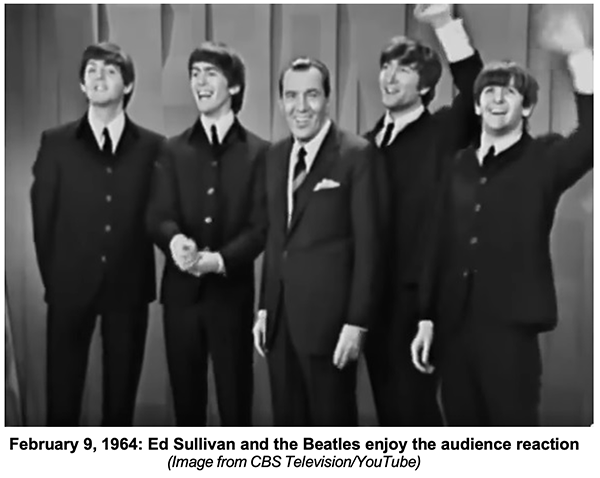
EPILOGUE
If their first “Ed Sullivan Show” performance was the “penthouse suite” of their first visit to America, the foundations of that structure were the countless radio stations around the United States that highlighted the band and played their music incessantly. There are endless stories about the big AM Top-40 stations of that era, their star disc jockeys, and their various encounters with the Beatles, both on and off the air.
I was a youngster in Baltimore at that time, and I was already hooked on radio and everything about it. I was a big fan of AM Top-40 powerhouse WCAO. The “Big 60” was the radio station for young Baltimore in that era, and their on-air staff were all celebrities in the community. Noted radio entrepreneur Kerby Confer was a WCAO disc jockey then, using the name “Kerby Scott” on the air.
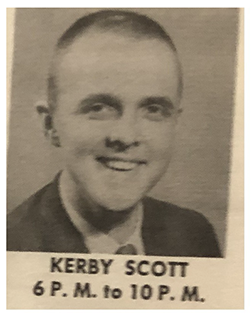 1964 WCAO Promotional Material: “Kerby Scott photo
1964 WCAO Promotional Material: “Kerby Scott photo
(Photo courtesy Kerby Confer)
I recently spoke with Kerby Confer (almost two hours on the phone!) and reminisced about that era and WCAO’s role in it. When the Beatles took the train from New York to their gig in Washington, one of Kerby’s colleagues, veteran WCAO newsman Frank Luber, managed to board the train when it stopped at Pennsylvania Station in Baltimore and recorded an interview with the Beatles. The tape was brought back to the station and aired.
If WCAO was already immersed in Beatlemania, that episode had the station and its staff absolutely swimming in it. Kerby Confer told me that moment influenced his life and his career in ways he didn’t fully appreciate at the time. He said he was just another guy doing pretty well on the air in Baltimore, but that moment led to him becoming Baltimore’s “Fifth Beatle.” Wait, what? Baltimore’s “Fifth Beatle?”How did that come about?
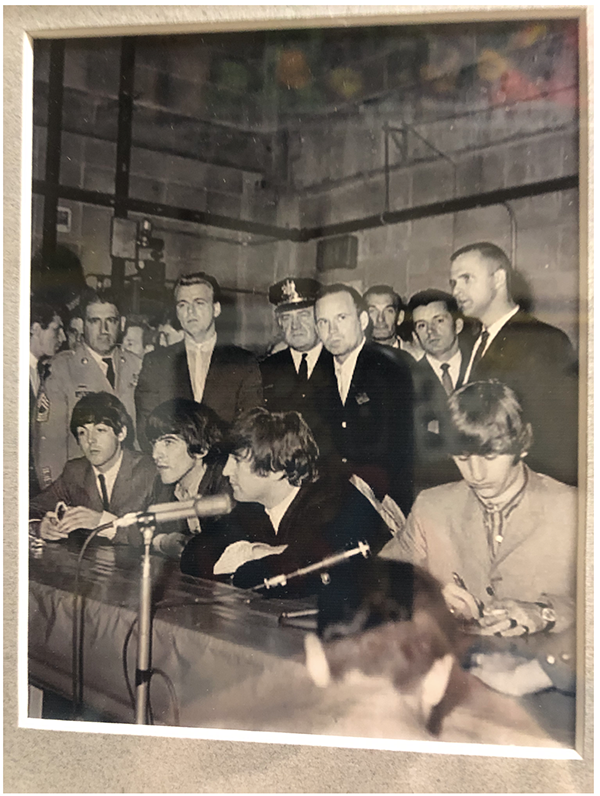
September, 1964: The Beatles and Baltimore media. “Kerby Scott” Confer is at the far right, directly behind Ringo (Photo courtesy Kerby Confer)
As it turned out, Kerby Scott soon became the host of WCAO’s “Liverpool Hour,” an evening program in conjunction with his regular on-air work at the station. The program featured the music of the Beatles and the many other artists who came out of the UK at that time.
Kerby usually wore his hair short in a buzz cut, but Paul Rodgers – his lifelong friend, WCAO colleague, and business partner later – convinced him to grow his hair out enough to solidify the “Fifth Beatle” persona. Kerby eventually sported a very restrained Beatles-style haircut to complete the image (I don’t think he kept the haircut for very long). He was an obvious choice to emcee one of the Beatles’ shows when they performed at the Baltimore Civic Center in September of 1964, and he later hosted “The Kerby Scott Show” on WBAL-TV; it was a dance party program, Baltimore’s version of Dick Clark’s show “American Bandstand,” and I believe it was eventually syndicated elsewhere. Before long, Kerby Confer moved over to the business side of radio in management and ownership. He was very successful in that endeavor, and still owns and operates many radio stations today.
So, Kerby Scott Confer and Mark Wainwright were just two more young radio guys whose lives and careers were influenced by that first Beatles weekend in the United States. It bears repeating: a veteran television host and four young musicians from England changed everything on the night of February 9,1964.
Mark Wainwright is a long-time radio personality, talk show host, and voiceover performer who has worked on the air at numerous respected radio stations around the United States. He was most recentlythe morning host at WSYR in Syracuse, New York. A Baltimore native, Mark currently resides inSaratoga County, New York. He can be reached at: markwainwright@earthlink.net
Share this with your network
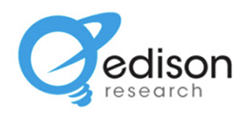 those living in suburban or urban areas. Rural listeners spend 43% of their daily audio listening time with AM/FM radio and radio streams, compared with urban listeners who spend 34% of their time with AM/FM radio and radio streams. Meanwhile, Urban listeners spend over twice as much of their daily audio time with podcasts as rural listeners. Urban listeners spend 13% of their daily audio time with podcasts compared with rural listeners who spend 6% of their daily time with podcasts.” Interestingly, if you combine the AM/FM listening and podcast listening numbers for Urban, Suburban and Rural listeners, these numbers are essentially the same – between 47% and 49%. Edison notes, “It appears that the ‘time budget’ for radio and podcasting combined is consistent across locations; it is just the apportionment of that time that varies.”
those living in suburban or urban areas. Rural listeners spend 43% of their daily audio listening time with AM/FM radio and radio streams, compared with urban listeners who spend 34% of their time with AM/FM radio and radio streams. Meanwhile, Urban listeners spend over twice as much of their daily audio time with podcasts as rural listeners. Urban listeners spend 13% of their daily audio time with podcasts compared with rural listeners who spend 6% of their daily time with podcasts.” Interestingly, if you combine the AM/FM listening and podcast listening numbers for Urban, Suburban and Rural listeners, these numbers are essentially the same – between 47% and 49%. Edison notes, “It appears that the ‘time budget’ for radio and podcasting combined is consistent across locations; it is just the apportionment of that time that varies.”


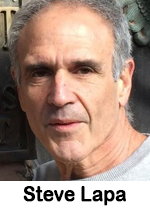 It may seem impossible, but you need to stay in your lane.
It may seem impossible, but you need to stay in your lane.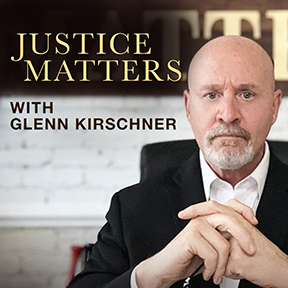 News/MSNBC legal analyst. In this podcast, he addresses matters related to politics, the law, government ethics, and the criminal judicial system. The podcast is published each Tuesday, Thursday, and Saturday. Crossover Media Group managing member Sue Freund says, “Glenn has earned an admirable reputation as one of America’s most respected legal and political analysts. He’s an ideal fit with our wide and diverse lineup of talk hosts appealing to listeners across demographics.” Crossover says this new podcast “joins a wide array of shows produced and/or represented by Crossover Media Group spanning the spectrum of political talk, analysis and opinion. The Crossover Media Group lineup also includes dozens of other popular podcasts and personalities in the genres of news, sports, true-crime, history, business, science, lifestyle, entertainment and pop culture – a content portfolio which recently expanded with the addition of ‘The Official Yellowstone Podcast.’”
News/MSNBC legal analyst. In this podcast, he addresses matters related to politics, the law, government ethics, and the criminal judicial system. The podcast is published each Tuesday, Thursday, and Saturday. Crossover Media Group managing member Sue Freund says, “Glenn has earned an admirable reputation as one of America’s most respected legal and political analysts. He’s an ideal fit with our wide and diverse lineup of talk hosts appealing to listeners across demographics.” Crossover says this new podcast “joins a wide array of shows produced and/or represented by Crossover Media Group spanning the spectrum of political talk, analysis and opinion. The Crossover Media Group lineup also includes dozens of other popular podcasts and personalities in the genres of news, sports, true-crime, history, business, science, lifestyle, entertainment and pop culture – a content portfolio which recently expanded with the addition of ‘The Official Yellowstone Podcast.’” Barry Armstrong. The program is hosted by Chuck Zodda and Mike Armstrong and is heard on 14 affiliate stations. Wolfe began his tenure with Money Matters in August of 2014 after many years serving as the VP of programming and operations for sports talk WEEI and news/talk WRKO in Boston. Money Matters says, “Since joining Money Matters, Wolfe has led the growth of the show’s radio network as well as creating new content and sponsorship opportunities for current and prospective clients, negotiating all network contracts, and expanding the show’s digital footprint through a daily live video stream which can be seen on Facebook, Twitch and the show’s website.” In his role as COO, Wolfe will oversee all aspects of the company’s policies and procedures, including finance, network operations, sales, and marketing.
Barry Armstrong. The program is hosted by Chuck Zodda and Mike Armstrong and is heard on 14 affiliate stations. Wolfe began his tenure with Money Matters in August of 2014 after many years serving as the VP of programming and operations for sports talk WEEI and news/talk WRKO in Boston. Money Matters says, “Since joining Money Matters, Wolfe has led the growth of the show’s radio network as well as creating new content and sponsorship opportunities for current and prospective clients, negotiating all network contracts, and expanding the show’s digital footprint through a daily live video stream which can be seen on Facebook, Twitch and the show’s website.” In his role as COO, Wolfe will oversee all aspects of the company’s policies and procedures, including finance, network operations, sales, and marketing.
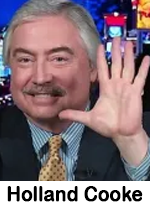 Why? Done right, it makes you special. Because new-tech audio competitors don’t do local news, and with most broadcast radio hours now robotic.
Why? Done right, it makes you special. Because new-tech audio competitors don’t do local news, and with most broadcast radio hours now robotic.
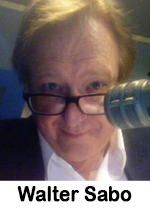 To be an expert in marketing requires expertise in how memory works. Early in my consultant practice, I studied and read every book I could find on the processes of memory. The best book is Effective Frequency: The Relationship Between Frequency and Advertising Effectiveness. Put simply, how many times does a consumer have to hear a message before it has impact? The book, a collection of studies, is the foundation for every qualitative study in the field today.
To be an expert in marketing requires expertise in how memory works. Early in my consultant practice, I studied and read every book I could find on the processes of memory. The best book is Effective Frequency: The Relationship Between Frequency and Advertising Effectiveness. Put simply, how many times does a consumer have to hear a message before it has impact? The book, a collection of studies, is the foundation for every qualitative study in the field today.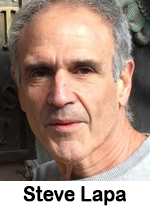 The media headlines are dizzying these days, yet they all share one common thread. See if you can solve this puzzle.
The media headlines are dizzying these days, yet they all share one common thread. See if you can solve this puzzle.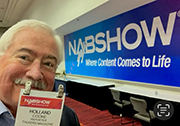 Thank me later for these Blackjack tips, based on many convention years’ experience, sometimes painful:
Thank me later for these Blackjack tips, based on many convention years’ experience, sometimes painful:
 media budget, adding AM/FM radio to a digital/TV plan sharply builds reach. Via Nielsen Commspoint, the media allocation planning tool, a wide range of monthly digital/TV media plans were examined. Very small, light, medium, and heavy campaigns were examined. The lightest digital/TV campaign reached 10% of the market. The heaviest reached 60%. Then a 20% allocation of AM/FM radio was introduced. The results were stunning. Across the seven monthly campaigns, from the lightest to the heaviest, the addition of AM/FM radio generated significant lifts in reach. Shifting 20% of the lightest TV/digital campaign to AM/FM radio caused reach to double. Introducing the 20% allocation of AM/FM radio to medium-sized campaigns causes reach to soar by 36% to 55%. Even the heaviest TV and digital campaign saw reach grow 20% with the addition of AM/FM radio to the plan.”
media budget, adding AM/FM radio to a digital/TV plan sharply builds reach. Via Nielsen Commspoint, the media allocation planning tool, a wide range of monthly digital/TV media plans were examined. Very small, light, medium, and heavy campaigns were examined. The lightest digital/TV campaign reached 10% of the market. The heaviest reached 60%. Then a 20% allocation of AM/FM radio was introduced. The results were stunning. Across the seven monthly campaigns, from the lightest to the heaviest, the addition of AM/FM radio generated significant lifts in reach. Shifting 20% of the lightest TV/digital campaign to AM/FM radio caused reach to double. Introducing the 20% allocation of AM/FM radio to medium-sized campaigns causes reach to soar by 36% to 55%. Even the heaviest TV and digital campaign saw reach grow 20% with the addition of AM/FM radio to the plan.” 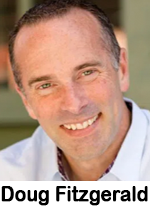 show produced at KLIN is titled after is best-selling book, ONESHOT. ONELIFE. – The Ultimate Success Formula To Help You Win At Anything In Life (Morgan James Publishing, 2018). NRG general manager Ami Graham says, “Doug has been a friend of KLIN for years. During your drive home, Doug will tackle the issues that matter to our community through commentary, guests, and listener engagement. We are thrilled to have him on our airwaves every weekday.” Fitzgerald says, “I am excited and honored for the opportunity to serve Lincoln and Nebraska on such an iconic station as KLIN and during a time slot where great hosts have broadcast over the years. My vision is to address the cultural issues that impact our city and state through the lens of the values that make Nebraska ‘The Good Life.’ To me, ‘Drive Time Nebraska’ will be like taking a road trip with your family or good friends… having great conversations and fun, along with getting on each other’s nerves now and then. In the end, you still make it home together.”
show produced at KLIN is titled after is best-selling book, ONESHOT. ONELIFE. – The Ultimate Success Formula To Help You Win At Anything In Life (Morgan James Publishing, 2018). NRG general manager Ami Graham says, “Doug has been a friend of KLIN for years. During your drive home, Doug will tackle the issues that matter to our community through commentary, guests, and listener engagement. We are thrilled to have him on our airwaves every weekday.” Fitzgerald says, “I am excited and honored for the opportunity to serve Lincoln and Nebraska on such an iconic station as KLIN and during a time slot where great hosts have broadcast over the years. My vision is to address the cultural issues that impact our city and state through the lens of the values that make Nebraska ‘The Good Life.’ To me, ‘Drive Time Nebraska’ will be like taking a road trip with your family or good friends… having great conversations and fun, along with getting on each other’s nerves now and then. In the end, you still make it home together.”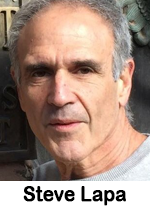 Is that host read you are pitching “baked-in?”
Is that host read you are pitching “baked-in?” Have we passed the disappointment of 2023?
Have we passed the disappointment of 2023? Jessica Tighe, who joins the station from “CBS58” airing from 11:00 am to 1:00 pm; “Spanning the State,” hosted by As Goes Wisconsin founder Kristin Brey, airing from 1:00 pm to 3:00 pm; and “Wisconsin’s Afternoon News” host John Mercure is joined by new co-host Julia Fello, formerly a lead reporter at WTMJ-TV. Good Karma Milwaukee market manager Greg Scalzo comments, “As a Wisconsin-based media company, we are excited to further our commitment to providing best-in-class news content that unites the state and strengthens the communities we call home. With this new lineup, one thing we wanted to emphasize is a shift in who we hear on the station and how our content can be consumed. Our fans will hear from hosts with new, diverse perspectives and experiences with shows and stories distributed across all mediums to reach fans where they are. We remain dedicated to continuing 620 WTMJ’s storied legacy, delivering purposeful news and telling the stories that matter to you throughout Wisconsin. Our new shows and voices will give us more of an opportunity to relate and be relevant to anyone who tunes in, while staying committed to the mission of being Wisconsin’s News Radio.”
Jessica Tighe, who joins the station from “CBS58” airing from 11:00 am to 1:00 pm; “Spanning the State,” hosted by As Goes Wisconsin founder Kristin Brey, airing from 1:00 pm to 3:00 pm; and “Wisconsin’s Afternoon News” host John Mercure is joined by new co-host Julia Fello, formerly a lead reporter at WTMJ-TV. Good Karma Milwaukee market manager Greg Scalzo comments, “As a Wisconsin-based media company, we are excited to further our commitment to providing best-in-class news content that unites the state and strengthens the communities we call home. With this new lineup, one thing we wanted to emphasize is a shift in who we hear on the station and how our content can be consumed. Our fans will hear from hosts with new, diverse perspectives and experiences with shows and stories distributed across all mediums to reach fans where they are. We remain dedicated to continuing 620 WTMJ’s storied legacy, delivering purposeful news and telling the stories that matter to you throughout Wisconsin. Our new shows and voices will give us more of an opportunity to relate and be relevant to anyone who tunes in, while staying committed to the mission of being Wisconsin’s News Radio.” 
 In early December 1963, America was a very gloomy place. The assassination of President John F. Kennedy on November 22 brought the country to a virtual standstill for four days, and the emotional and psychological hangover lingered for weeks. The nation needed a dose of uplifting energy and fun, and the Beatles were the ideal remedy.
In early December 1963, America was a very gloomy place. The assassination of President John F. Kennedy on November 22 brought the country to a virtual standstill for four days, and the emotional and psychological hangover lingered for weeks. The nation needed a dose of uplifting energy and fun, and the Beatles were the ideal remedy.



 1964 WCAO Promotional Material: “Kerby Scott photo
1964 WCAO Promotional Material: “Kerby Scott photo
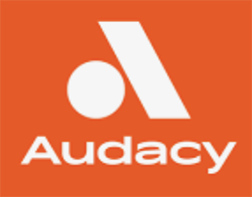 Audacy agrees to pay BMI $550,000 in settlement of those claims. Audacy and BMI agree to resolve the fee dispute with 60 days of BMI’s merger. Based on the results of the 2017-2019 Audit, BMI asserted that Audacy owed approximately $1.68 million in fees to BMI. Audacy disputed BMI’s claim and, since 2020, has been negotiating with BMI to settle that matter and any potential claims relating to Audacy’s 2020 revenue subject to license fees. BMI has also asserted that Audacy owes approximately $9.26 million in unpaid license fees and accrued late fees, which Audacy disputes. Audacy says in its filing that this “Settlement is in the best interest of all stakeholders (including Debtors’ secured creditors, the only impaired parties) because it will, subject to the closing of the merger, bring in at least $25 million of funds to the Debtors’ estates (potentially within days of this settlement being approved), with the possibility for up to an additional $13.6 million in the following months.”
Audacy agrees to pay BMI $550,000 in settlement of those claims. Audacy and BMI agree to resolve the fee dispute with 60 days of BMI’s merger. Based on the results of the 2017-2019 Audit, BMI asserted that Audacy owed approximately $1.68 million in fees to BMI. Audacy disputed BMI’s claim and, since 2020, has been negotiating with BMI to settle that matter and any potential claims relating to Audacy’s 2020 revenue subject to license fees. BMI has also asserted that Audacy owes approximately $9.26 million in unpaid license fees and accrued late fees, which Audacy disputes. Audacy says in its filing that this “Settlement is in the best interest of all stakeholders (including Debtors’ secured creditors, the only impaired parties) because it will, subject to the closing of the merger, bring in at least $25 million of funds to the Debtors’ estates (potentially within days of this settlement being approved), with the possibility for up to an additional $13.6 million in the following months.”  Now that every single thing is a political argument, the angry social media conversation about Taylor Swift is unsurprising. And with the Super Bowl looming, the decibel level amps-up.
Now that every single thing is a political argument, the angry social media conversation about Taylor Swift is unsurprising. And with the Super Bowl looming, the decibel level amps-up.